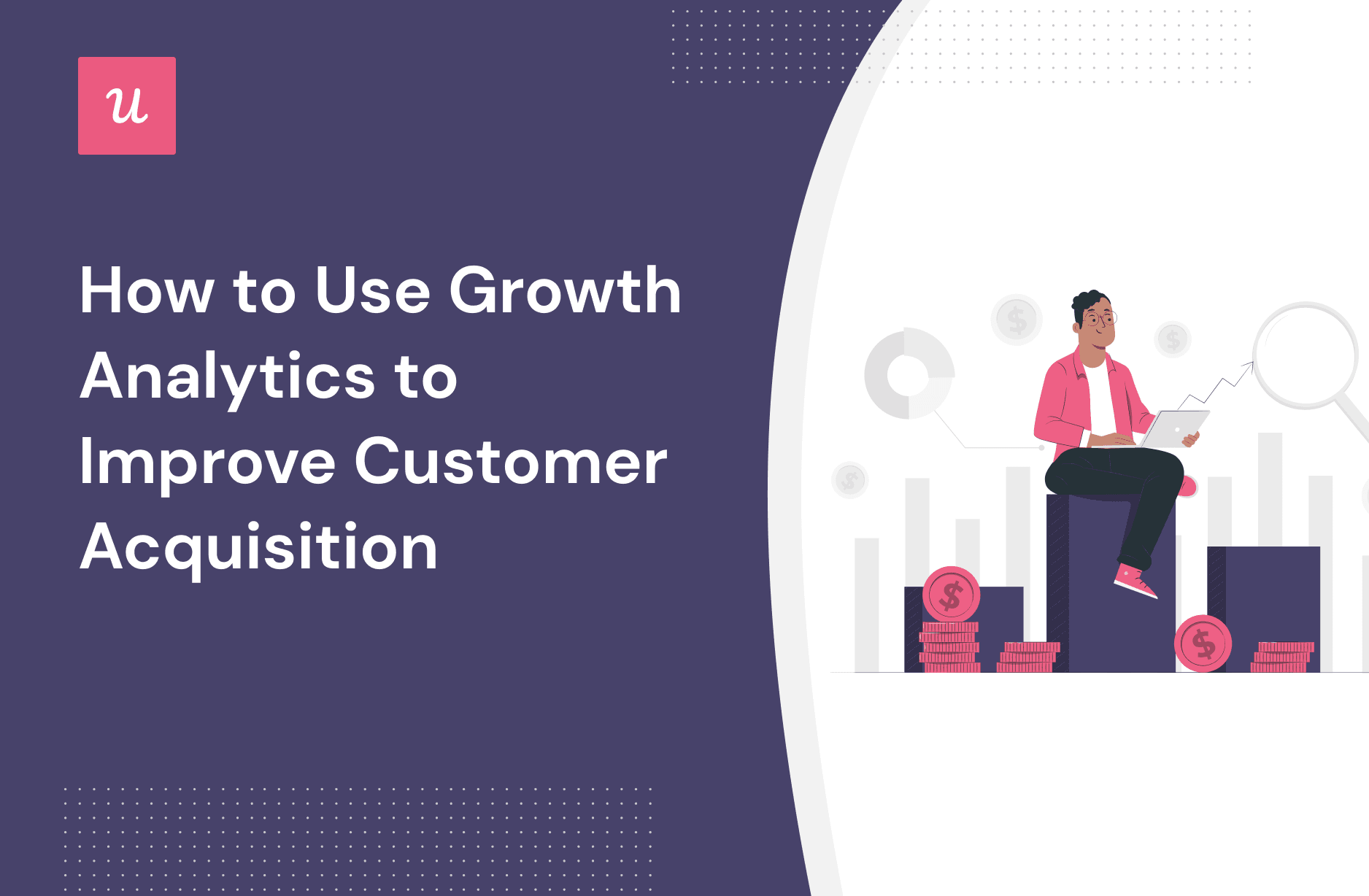
Wondering how you can make the most of your growth analytics to boost average revenue per user, and retention, and drive product growth?
In this article, we cover everything you need to know about growth analytics:
- How to perform a growth analysis using an easy five-step process.
- The growth metrics you should be tracking.
- How Userpilot can help you leverage your growth analytics.
Let’s get started.
Try Userpilot Now
See Why 1,000+ Teams Choose Userpilot

What are growth analytics?
Growth analytics looks at all parts of the process of growth and chooses the metrics that surround product growth, including monthly recurring revenue (MRR), annual recurring revenue (ARR), cost per acquisition (CPA), conversion rates, revenue growth, and more.
Companies that prioritize growth analytics in their product growth strategy will see sustainable revenue growth.
Growth analytics vs product analytics
Let’s break down the differences and similarities between these two analytics.
Product analytics is more concerned with how users are interacting with a product. It measures how often users sign in, use certain features, complete product milestones, etc., so it’s centered around in-app behavior.
On the other hand, growth metrics are centered around general user behavior and interactions with a brand. The key metrics include conversion rates, churn rates, revenue growth, and upsells.
As you can see, growth analytics is less concerned about specific in-app behavior, and more about the overall actions of users that can promote growth.
The benefits of using growth analytics
There are three main benefits to using growth analytics:
Understanding the underlying data and making data-driven decisions
Growth metrics help you gain valuable product usage insights. You can better understand how users are using your product.
Then, use that information to make decisions that will nurture product growth.
Reduce churn rate and improve customer experience
Tracking your growth metrics also helps you find and fix friction points. These are areas where users are experiencing issues or confusion, so they don’t naturally move on to the next step. When users experience friction like this, it leads to a higher churn rate.
On the other hand, if you use growth analytics to find and fix these friction points, you’ll give a better customer experience and grow your total revenue.
Identify high-value user cohorts to target for revenue growth
Growth analytics can help you identify your high-value cohorts to bring in valuable prospects. You’ll know exactly who your target customer is based on who spends the most money, gets the most value from your product, and sticks around the longest.
Knowing this information is valuable since you can invest more of your marketing and sales strategy into attracting similar customers.
How a cohort table can plug your leaky bucket.
Who can benefit from growth analytics?
Growth metrics are valuable for product teams, marketing teams, and UI/UX designers. Here’s how they can benefit from it:
- Product teams: Evaluate product performance, identify functional issues, and create a better growth strategy to increase the conversion rate.
- Marketing teams: Evaluate the campaign performance to improve customer acquisition efforts and bring in quality leads.
- UI/UX designers: Create more user-friendly experiences by tracking user behavior during a specific period.
How to perform growth analysis with data analytics?
Data analytics serves as a critical tool for understanding and fostering growth. So here come several tactics for you to leverage customer data for actionable growth insights.
Use trends to analyze the performance of different segments
You can use feature tags and custom events to track customer behavior across segments. This process will help give a complete picture of how different segments are interacting with your core features by giving you insights into:
- Which feature is frequently underutilized or overlooked by specific user segments?
- Is there a significant difference in the frequency of feature usage between various customer segments?
- How does the engagement level with different features vary based on the user’s subscription tier or pricing plan?
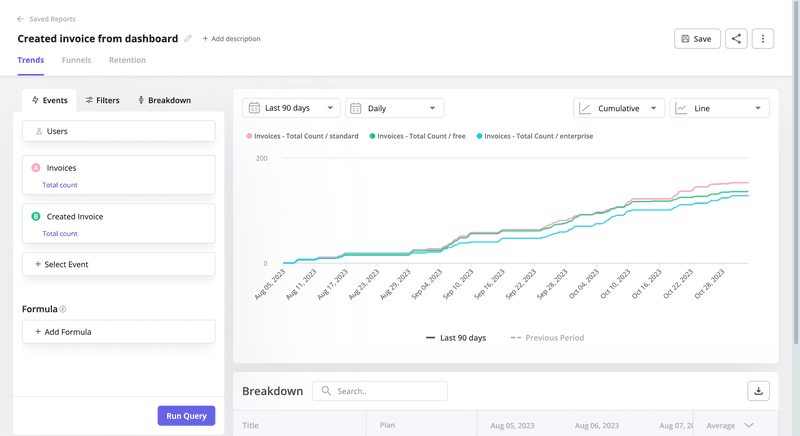
Trend analysis in Userpilot
If one segment is struggling, you can give more help with in-app guidance. If another is doing well, you can ask for reviews or survey them for additional context.
Combine cohort analysis and segmentation to find retention drivers
Cohort analysis is a type of behavioral analytics that helps you see what a segment of your users (a cohort) is doing within your product.
For example, you might want to track retention cohorts of new users who engage with a specific feature, in this case, are users who created invoices.
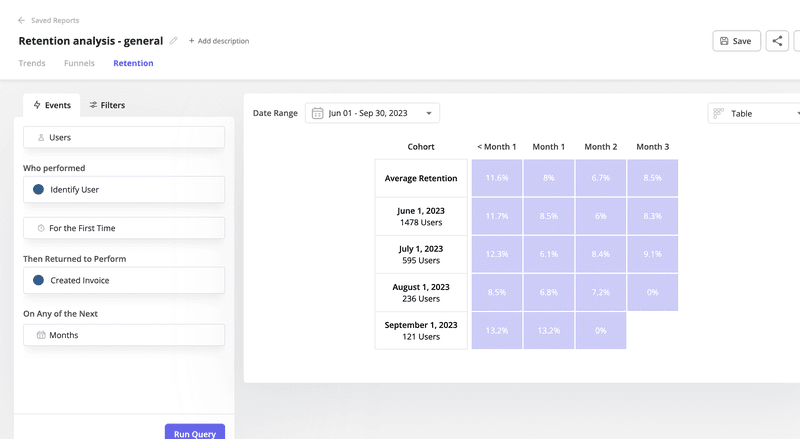
Among these cohorts, if the July group displays the highest retention rate, you can then segment the new users who signed up in July and have created invoices. These users can be targeted for surveys or further behavior analysis to collect insights into their product experience.
By doing that, we can strategize to replicate this experience for other users, thereby fostering higher retention rates across the platform.
A/B test different app flows to improve conversion rate
A/B testing is an effective method that helps you identify which change is necessary to improve your conversion rate, and ultimately drive growth.
For instance, with Userpilot, you can use a head-to-head A/B test to see if a modal or a tooltip is more effective in encouraging upgrades when users reach the trial usage limit.
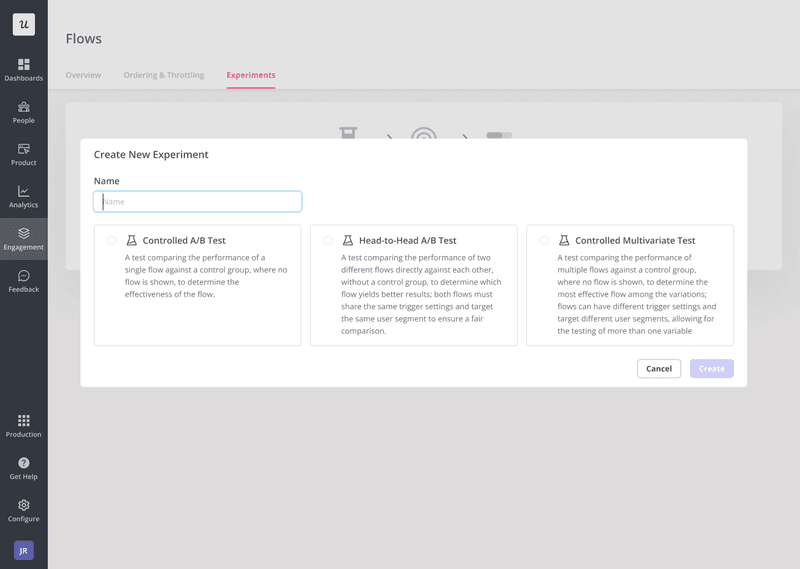
When you have the final result, you can roll out the winner version to the rest of your user base to drive account expansion.
Use funnels to understand your ideal trial period
Using funnels enables you to comprehend the duration required to attain activation. You can track the sequence of key feature usage within the funnel and analyze the average time taken for users to complete this journey.
Thereby you can determine the time necessary to derive value from your product. Additionally, by testing various trial period lengths based on data insights, you can strategically optimize the trial period to maximize conversions. Thus fostering sustainable growth for your business.
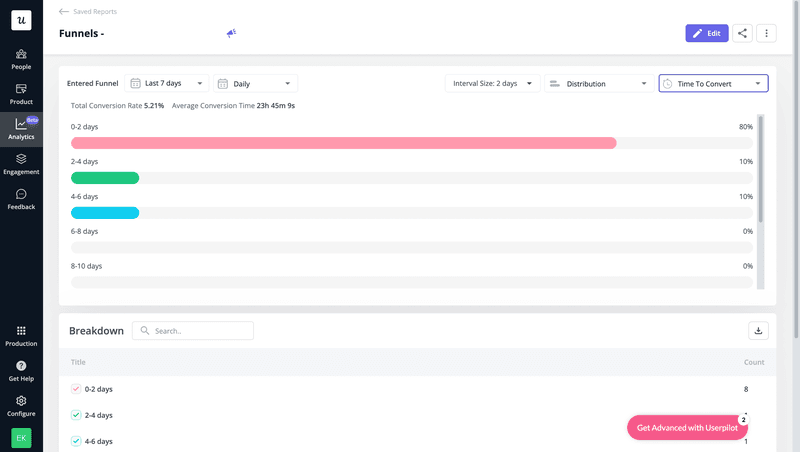
Try Userpilot to Collect and Analyze Product Data for Growth Insights!

Growth metrics you should be tracking
Here are the three main metrics for measuring growth that you should be tracking:
Monthly active users and daily active users
The active user base is a very important metric to measure growth.
One way to measure the number of active users is to calculate monthly active users and daily active users.
Monthly active users measure how many users log in to your product every month, whereas daily active users measure how many users log in every day.
Improving these figures also helps with retention since customers who use a product regularly are more likely to experience value.
Retention rate
The retention rate is an important indicator of good business health and customer satisfaction. As you increase customer retention, your customer acquisition cost decreases because you see more long-term sales to each customer.
To calculate your retention rate, first, subtract the number of users acquired during the period from the number of paying users at the end of the period. Then, divide that number by the total number of paying users at the beginning of that period. Finally, multiply that figure by 100 to get your retention rate.
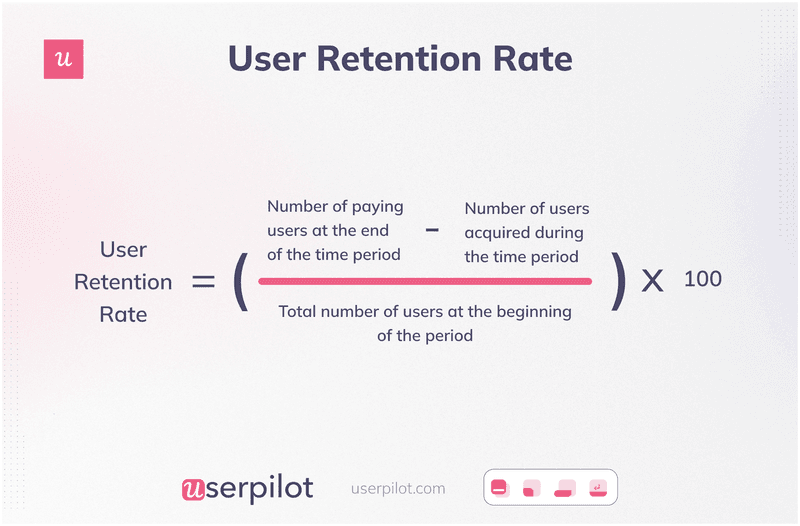
Here’s an example from a hypothetical email marketing app:
- Users acquired during the period: 100 users.
- Paying users at the end of the period: 450 users.
- Paying users at the beginning of that period: 400 users.
Retention Rate = [(450-100) divided by 400] x 100 = 87.5 %
Churn rate
Churn happens when a customer cancels their account. The churn rate gives you an overall image of your business growth.
The lower the churn rate, the higher the success of your growth strategy.
To calculate your churn rate, first, divide the number of churned customers during the period by the number of customers at the start of the period. Then, multiply that figure by 100.
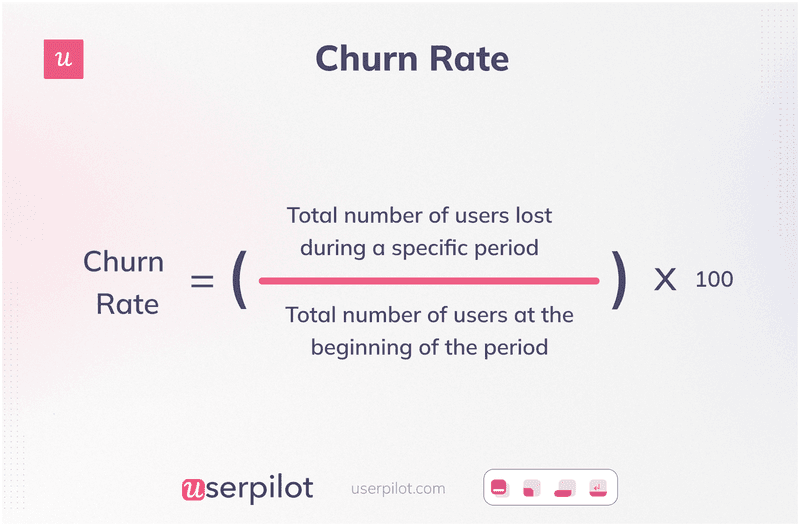
Here’s an example:
- Churned customers during the period: 50 users.
- Number of customers at the start of the period: 1,000 users.
Churn Rate = (50/1,000) x 100 = 5 %
How to leverage growth analytics with Userpilot
Userpilot makes it easy to leverage your growth analytics and create in-app experiences that benefit product growth:
Segment customers
The first step to leveraging growth analytics is to segment your customers based on common characteristics. Userpilot has advanced segmentation features that let you group customers by a dozen criteria:
- Group customers based on their product usage habits.
- Organize customers based on their geographic location.
- Segment customers based on their job role.
- Group customers based on their jobs to be done.
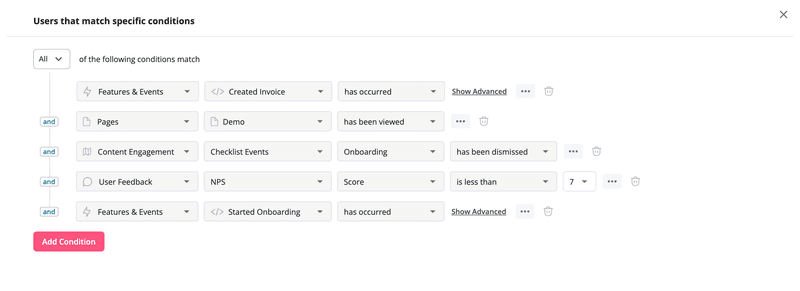
You can also segment customers based on their previous responses in surveys. For example, if you ran an NPS survey asking customers how likely they are to recommend your product to others, you can group the high scorers vs. the low scorers.
Use analytics to understand user behavior
Userpilot’s user behavior analytics lets you track how users are interacting with your product using feature tags and custom events.
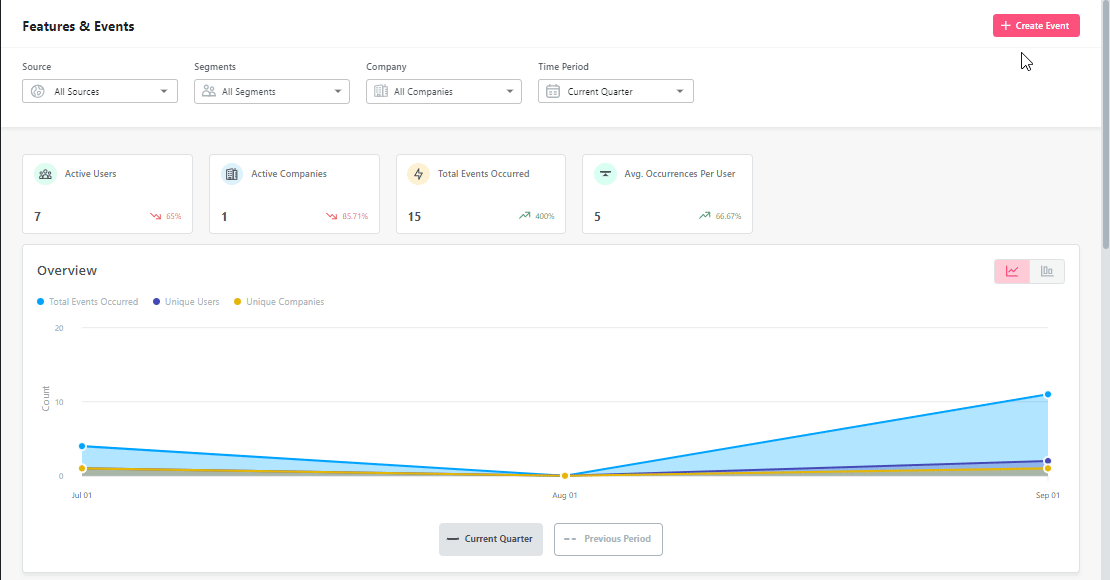
You can use this information for actionable analytics by generating a variety of analytics dashboards like trends, funnel, and retention tables. Userpilot’s trends and funnels report lets you extract actionable insights from big data. You’ll be able to see which stage of an onboarding/conversion funnel most users drop out on and create trend reports with detailed breakdowns by user or time period.
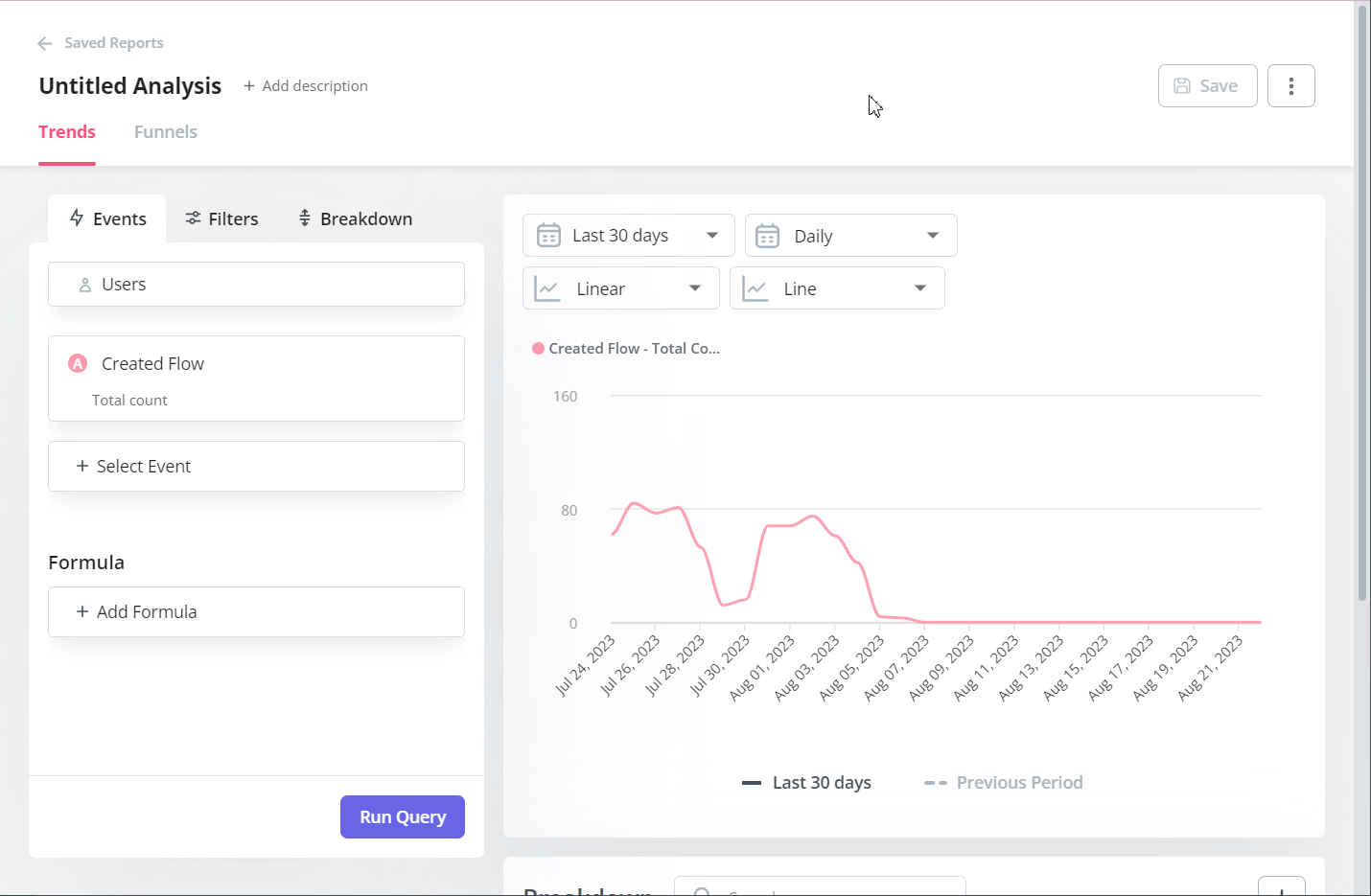
You can save these reports and find them under Saved Reports.
Build and deliver in-app experiences to drive growth
You can use the data to create contextual flows or trigger in-app surveys to collect more data.
For example, if you notice that users aren’t trying out a new high-value feature, you can create an in-app flow that walks them through how to use the feature. With a mix of interactive tooltips, you can demonstrate the value of the feature and step-by-step how to use it.
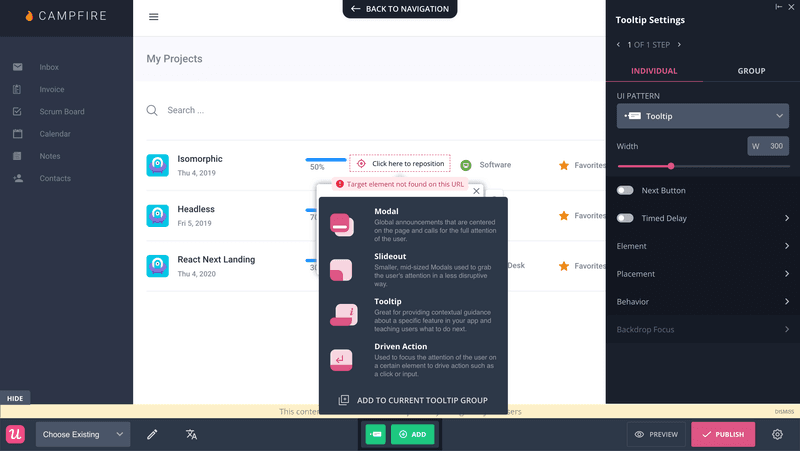
Conclusion
Tracking your growth analytics is endlessly valuable for boosting your overall profits. It should be a priority for every SaaS team in 2023.
Want to get started with tracking your growth analytics? Get a Userpilot Demo and see how you can track and act on data to drive growth.
Try Userpilot to Collect and Analyze Product Data for Growth Insights!







